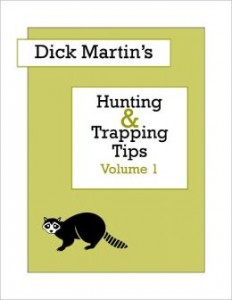Farmers and landowners have enough problems these days without adding predation by foxes and coyotes, and there are plenty of both out there in family woods and fields. Actually, red fox populations are down a bit, possibly due to predation by coyotes, though there are still lots around, grey fox are almost extinct north of Columbus (Ohio) and not too plentiful in the wooded hills south of that city. Coyotes? Their population seems to go up and up, so rapidly that those who hunt and trap them are making some excellent bags each winter.
Foxes admittedly feed primarily on mice and voles, which makes them useful in many a farmer’s eyes, but they also feast on young rabbits which landowners often like to hunt, on ground nesting birds, and on pheasants released to hopefully reproduce and bring back huntable populations. Coyotes have become the state’s No. 1 predator, and they’re perfectly capable of taking any animal they want, up to and including fawn deer if pickings otherwise are lean.
A farmer in western Richland County complained just last fall that his eight barn cats had fallen to five, then three, then one. He asked a local fox and coyote dog hunter to check out his woodlot, and the hunter and his friends bagged four coyotes. It goes without saying that they feast on cottontails too, which can be hard pressed to escape in deep snow, and on any other field and forest creatures they come across, including occasionally lambs when times are tough.
Getting rid of these various predators has always been a complex business, and when a landowner has no dogs, his only other recourse is to use traps, following as always the state’s rules and laws on such. For long years the most popular set for fox and coyotes was dirt hole sets. I used them myself once upon a time, but always had a problem with them. Each trapping season I made up extremely smelly concoctions of fish and groundhog meat left to “mellow” in the sun for days at a time, and I’ll admit they worked, at least when skunks didn’t find them first.
But it takes plenty of time and effort to make those sets properly, and sometimes over past years I didn’t want to take that time, and turned to raccoons, mink, and muskrats instead. Then a veteran old trapper showed me how to take fox and coyote the easy way, and his technique took so little time and effort that he could set as many traps around his large farm as he wished in just a few hours.
One of his techniques that absolutely hammered local predator populations was what he called a scent post set, which like his other techniques, required at least a few inches of snow. He looked for areas where good timber or thick brush paralleled a short grass or cut soybean field, then placed ordinary chunks of stove wood, pieces about two feet long and 8-10 inches high about twenty or thirty feet out in the field and parallel to the woods. Finally, he placed two traps, one near each end of the stove wood and on the timber or brush side under the snow. He rarely used urine or scent on the wood, though it wouldn’t hurt, but the stove chunk itself was usually enough.
The basic idea here is that foxes and coyotes are a lot like dogs. They like to mark their territory with urine and when they’re trotting alongside timber or brush, as they often do, there are very few bushes or grass clumps out in that bare field to sprinkle. So, the wood is a natural spot to urinate, spring one trap or both, and get caught. The old timer found them a quick and easy set to make, and you should, too.
Another favorite tactic of this old timer, particularly in large open areas between woodlots, was to run his pickup across a field with six to 12 inches of snow from one timber area to another, then set traps in the tire tracks. Fox and coyotes are lazy, and they’ll run the tracks rather than buck deep snow. He more than once found catches in both tracks sitting scarcely 10 feet away from each other.
Since he raised sheep, yet another favorite set was made with sheep manure. He would often haul a pickup load to an open field with good cover nearby, pile it high, then set traps completely around it. The pile would routinely account for multiple foxes particularly, and whether they liked the smell, the warmth, or enjoyed rolling in it didn’t matter. They came and they’d probably come to horse or cow manure as well.
A final set that accounted for at least an occasional fox, but also hammered the local raccoons, skunks, and opossums was to use a box trap in wooded or brushy areas. He would cover the trap with a bit of brush or tall grass to break up its outline, then (and this is the crucial point), bait it with fresh pork cracklings. “I think they can smell those cracklings for half a mile, and they love ’em” he said. “Everything around follows in the scent and gets caught”.

Readers who enjoy hunting and trapping might be interested in Martin’s new e-book “Dick Martin’s Hunting and Trapping Tips.” It’s available from Amazon.com (Kindle) or Barnes&Noble (Nook book) for $2.99.
Tags: Dirt Hole Sets, Ohio Coyote Trapping, Ohio Fox Trapping, Scent Post Set Trap, Trapping Coyotes, Trapping Fox
